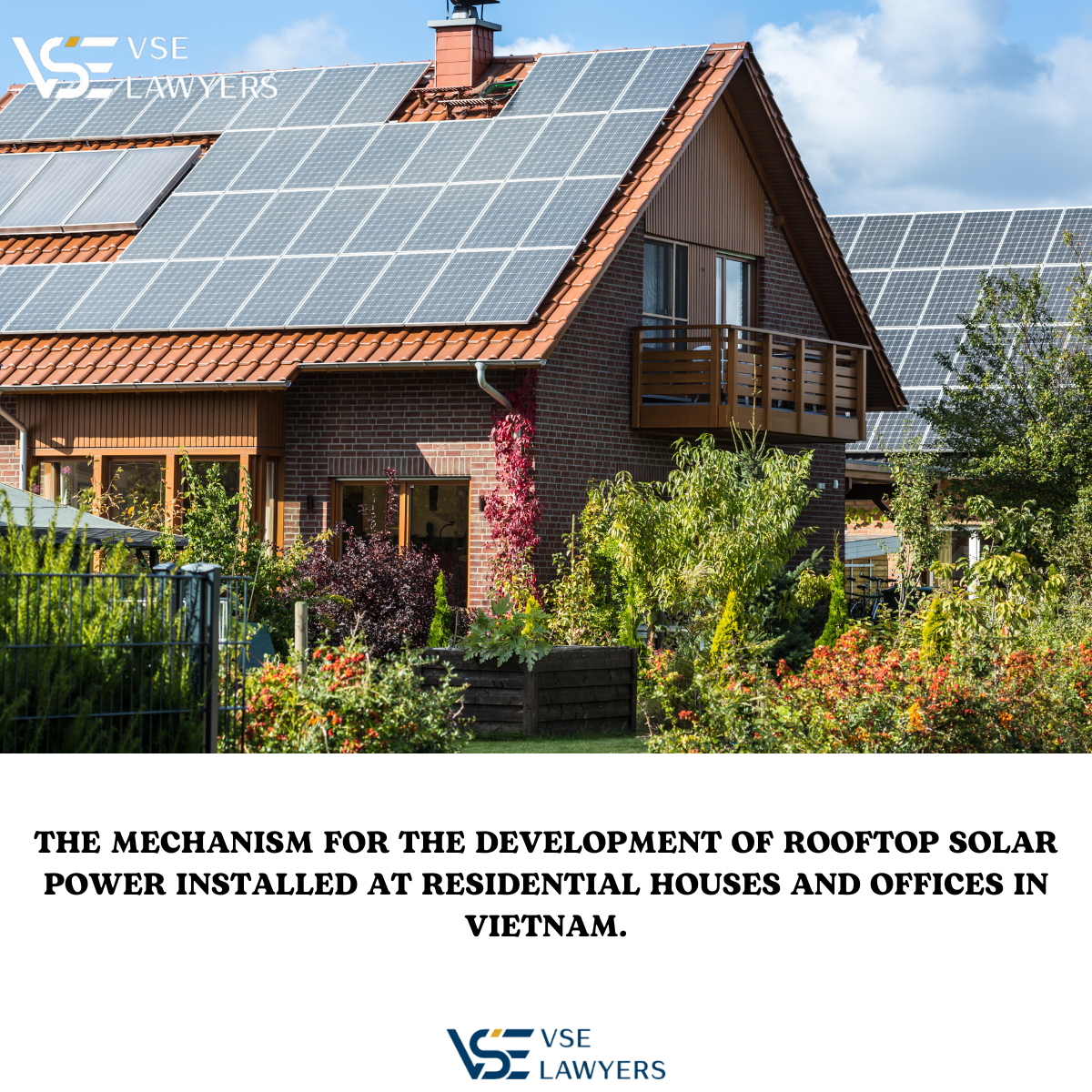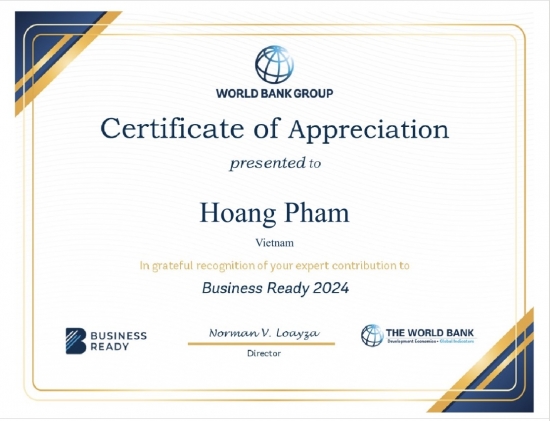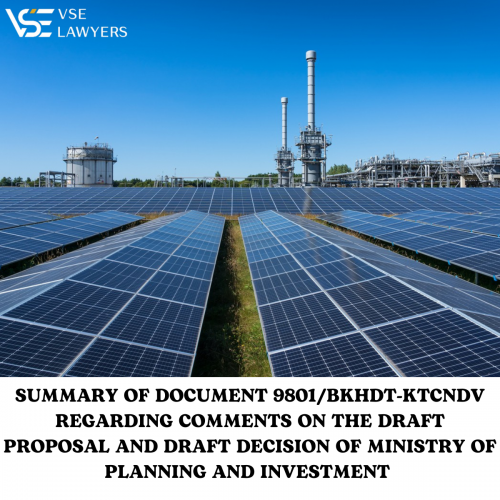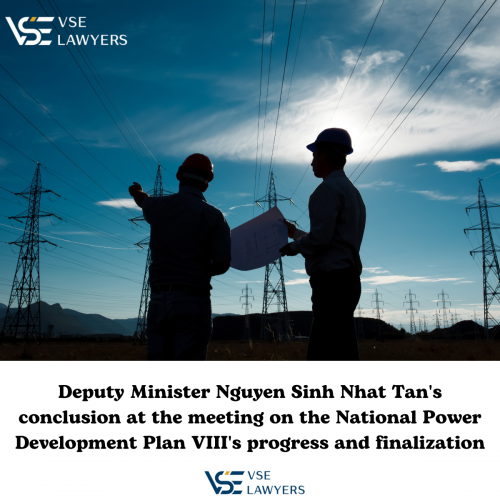THE MECHANISM FOR THE DEVELOPMENT OF ROOFTOP SOLAR POWER INSTALLED AT RESIDENTIAL HOUSES AND OFFICES IN VIETNAM.
MOIT recently issued Report No. 160/BC-BCT dated September 15, 2023, on the mechanism for the development of rooftop solar power installed at residential houses and offices in Vietnam.
19/09/2023

MOIT recently issued Report No. 160/BC-BCT dated September 15, 2023, on the mechanism for the development of rooftop solar power installed at residential houses and offices in Vietnam.
Regarding the state's orientations, policies, and laws, the MOIT reports that a breakthrough is needed to promote renewable energy development, with a particular focus on the prioritized development of rooftop solar power for self-consumption. Additionally, the existing legal framework lacks specific regulations regarding incentivizing investments and installations of rooftop solar power systems and penalties for violations. Therefore, there is a need to enhance the legal framework for these areas.
Some of the MOIT’s proposals for incentivizing solar power development are as follows:
1. For grid-connected models:
Model 1: Non-selling power to organizations and individuals
Purpose: Production, consumption, and self-use of solar energy at the site without selling to other organizations or individuals.
Applicable to: Individuals, technology parks, schools, small enterprises with rooftop installations, with low capacity and mainly daytime electricity consumption.
Installation: Investors need to calculate and balance resources.
Advantages: Suitable for solar power operation hours.
Challenges: Not selling electricity to others may pose challenges during installation and management.
Model 2: Model allowing the sale of electricity to organizations and individuals
In addition to the entities covered under Model 1, Model 2 may include selling solar energy to industrial zones, export-processing zones, factories, etc.
Advantages: Overcomes the challenges of Model 1, creates business opportunities, but it's more complex due to the need to determine electricity selling prices and negotiate pricing frameworks.
Challenges: Requires electricity pricing policies, agreements between parties based on pricing frameworks, and managing a larger volume of transactions and electricity storage because of the large amount of investors.
Currently, the MOIT is researching and developing a Direct Power Purchase Agreement (DPPA) mechanism, but it may not apply to rooftop solar projects or may have restrictions on projects with a capacity exceeding 10 MW.
Model 3: Model not connected to the national grid
Purpose: Production, use, or sale of solar power to organizations and individuals outside of the national grid, such as EVN, without connecting to the national grid.
Advantages: Self-supply of electricity, independence from the national grid.
Challenges: Must ensure stable power supply in case of shortages, weather dependence, and compliance with safety and environmental requirements. When selling electricity to organizations and individuals beyond the EVN scope and with a capacity greater than the exempted level, electricity operation licenses must be obtained according to legal regulations.
Note: Investors and projects operating under Model 3 will still be subject to other legal regulations such as investment, construction, environment, fire prevention and fighting, etc.
2. State Management Issues in Policy Implementation
The MOIT believes that whether rooftop solar is self-consumed or not connected to the national grid, the state must continue to manage it to ensure various objectives:
- Development scale objectives
- Objectives of safety and stability of the power system
- Objectives of environmental protection, safety, and prevention of fire and explosion
- Objectives regarding urban architecture, construction order, and construction safety
3. On the issuance of mechanisms:
The MOIT proposes that the form and authority to issue mechanisms should be a Government Decree, following an abbreviated process and procedure.
Some contents under consideration to be included in policies:
- Allowing rooftop solar power systems to be connected to the grid without requiring an interconnection agreement with the electricity sector. Allowing self-consumed rooftop solar power systems to be grid-connected but not export electricity to the national grid, with a total capacity of up to 2600 MW by 2030.
- Self-consumed solar power not connected to the national grid can be sold to entities outside of EVN.
- Tax incentives, fees, and charges as provided by tax regulations.
- Administrative procedures for development registration (including scale, location, electrical equipment, construction type, etc.).
See the Document here
----------
For more information, please contact:
Hoang Pham (James) / Managing Partner at: hoang.pham@vselawyers.com
© 2023 VSE LAWYERS LIMITED LIABILITY LAW COMPANY – All rights reserved.
Attention: This legal update is not an advice and should not be treated as such.
Subscribe To Legal Advice from VSE Lawyers
If you would like to have any legal questions, please contact us for our advice


.jpg)

